Sourdough Cinnamon And Sugar Pull-Apart Bread
This post may contain affiliate links. As an Amazon Associate, I may receive a small commission, at no cost to you, if you make a purchase. Please read our disclosure policy.
This is the BEST sourdough cinnamon and sugar pull-apart bread recipe you will ever make! Your search is over if you’re looking for a sourdough monkey bread recipe made without canned biscuit dough. Each layer of soft, tender sourdough-enriched bread is coated with sweet cinnamon and sugar goodness. Each bite is loaded with tons of flavor!
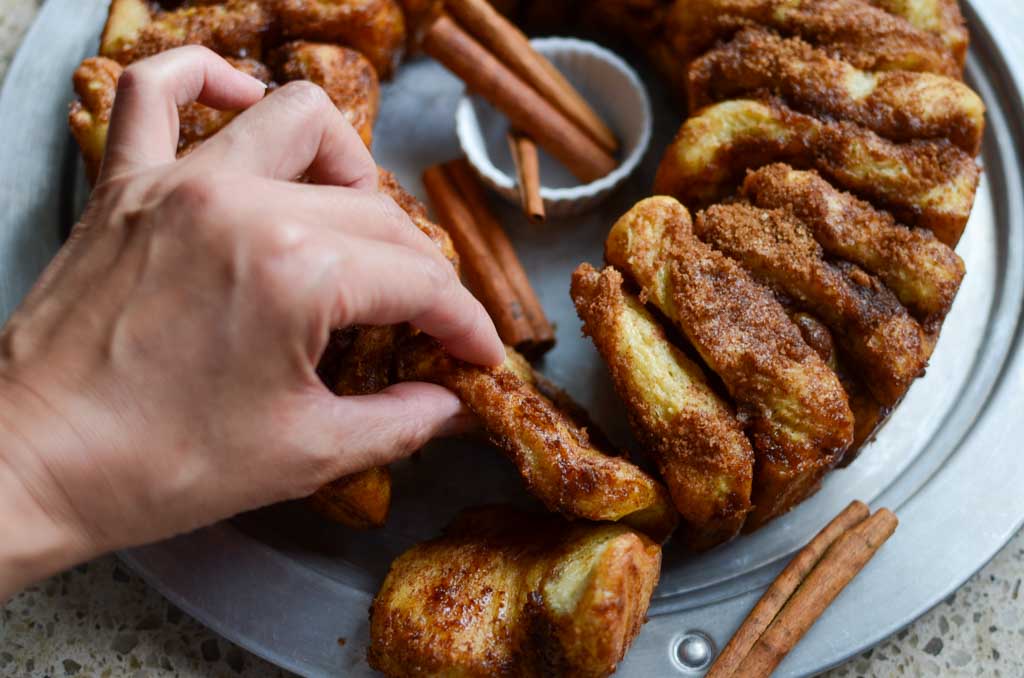
This sweet, gooey, cinnamon sugar pull-apart bread, sometimes referred to as monkey bread, is a familiar treat but made better.
Instead of commercial yeast as the leavening agent, this delicious pull-apart bread uses an active sourdough starter for its lifting power. Sourdough is known for that familiar tang but also spouts health benefits that make it worth the time it takes to prepare. The extended fermentation time helps break down the gluten, making it more digestible as well as increases the bioavailability of the bread’s vitamins and minerals.
Perfect for breakfast, a snack, or dessert, anyone who tries it won’t be able to resist another bite. If you love my sourdough cinnamon rolls, then you’ll love to make this pull apart bread for breakfast on Thanksgiving or Christmas morning. But don’t just save it for a special occasion, you’ll want to make this sweet bread over and over just because.

Sourdough cinnamon and sugar pull-apart bread has quickly become my family’s favorite recipe, disappearing really quickly each time I make it. A word of advice, the most important thing you must do when making this bread is to serve it while it’s still warm and sticky.
Sourdough Cinnamon And Sugar Pull-Apart Bread Ingredients
Enriched Dough
- Sourdough starter – The starter should be full of bubbles and have doubled since its last feeding.
- Water – Always use warm water when mixing any type of sourdough bread to create a warm environment.
- Yogurt – Plain Greek yogurt will help to relax the gluten, creating a soft and tender bread.
- Honey – Just a bit of added sweetness to enrich the dough.
- Butter – Use melted salted butter for easy mixing.
- Eggs – Large eggs that have come to room temperature are easiest to mix into the dough.
- Flour – Use simple, unbleached all-purpose flour in this recipe.
- Salt – Flavors baked goods.
Cinnamon Sugar Filling
- Brown sugar – Use light or dark brown sugar for added caramel notes.
- Cinnamon – Ground cinnamon is the star flavor and adds just the right amount of spice.
- Butter – I use salted melted butter for the best flavor.
Sourdough Cinnamon And Sugar Pull-Apart Bread Instructions
Mix the Dough
The bread uses an active starter so you’ll need to feed the sourdough starter 6-8 hours before you plan to mix the dough. I generally use a 1:1:1 ratio whenever I feed my sourdough starter.
Melt 56 g (4 tbsp) butter in a small saucepan until it melts.
Add 125 g (1/2 cup) of sourdough starter, 50g (1/4 cup) Greek yogurt, 42 g (2 tbsp) honey, 3 large eggs, melted butter, and 50 g (1/4 cup) warm water into the bowl of a stand mixer fitted with a dough hook attachment. Turn the mixer on low and mix until the ingredients are combined.
Add 406 g (3 1/4 cups) all-purpose flour and 1/2 tsp salt to the wet ingredients and mix on medium-low speed for 5 minutes. Remove the dough hook and cover the bowl with a tea towel for 30 minutes. Allowing the dough to rest gives the flour a chance to fully hydrate and the gluten strands time to develop. Check the dough by grabbing the edge of the dough and lift it straight up. It will go from a shaggy dough into a smooth and elastic dough, indicating that the gluten is strong enough for bulk fermentation.

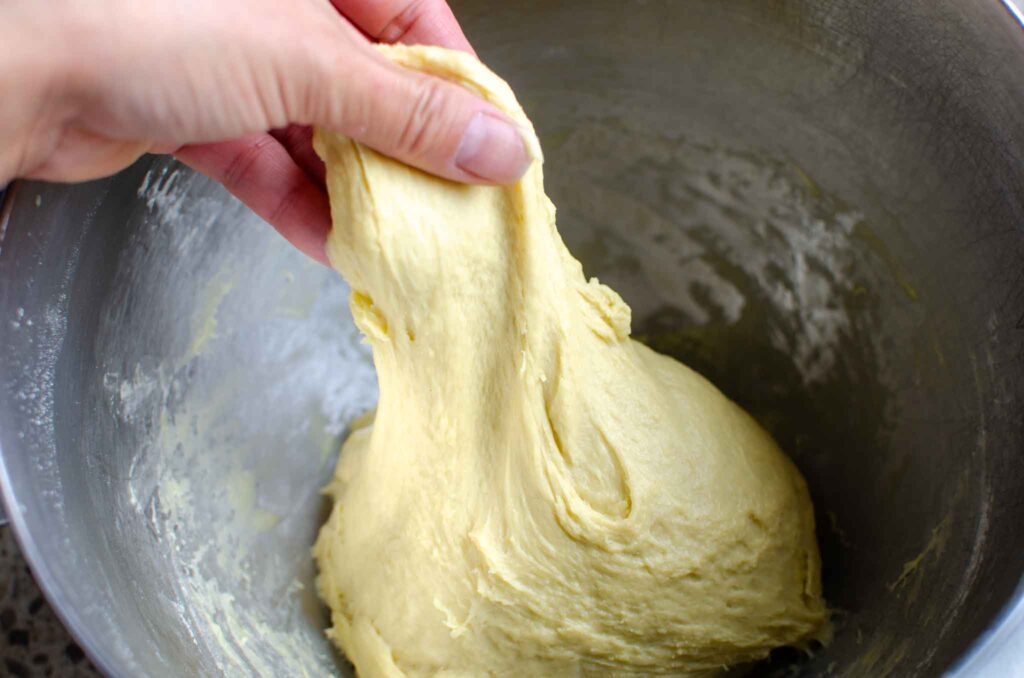
First Rise
Cover the bowl with a piece of plastic wrap or a plate and let the dough rise in a warm place in the kitchen for 10-12 hours.
The exact rise times will vary depending on the temperature of your kitchen and the strength of your sourdough starter. Be patient though, you don’t want to rush this step. I like to do this step overnight.
Tip: Take a before photo of the dough before its first rise so you have a visual reminder of how it looked to know when it has doubled in size.
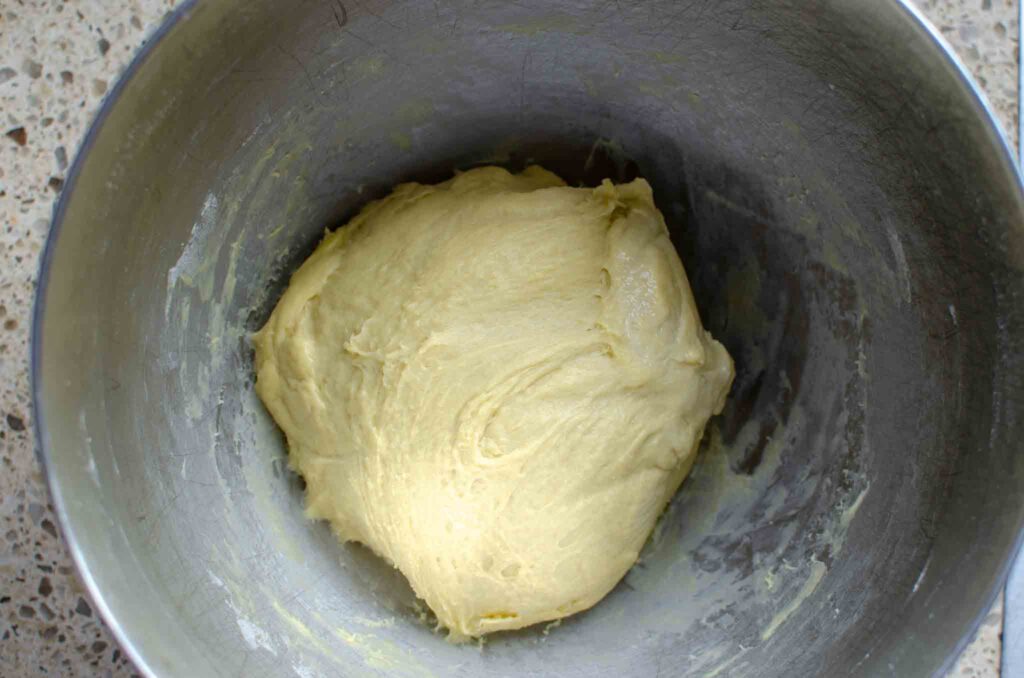
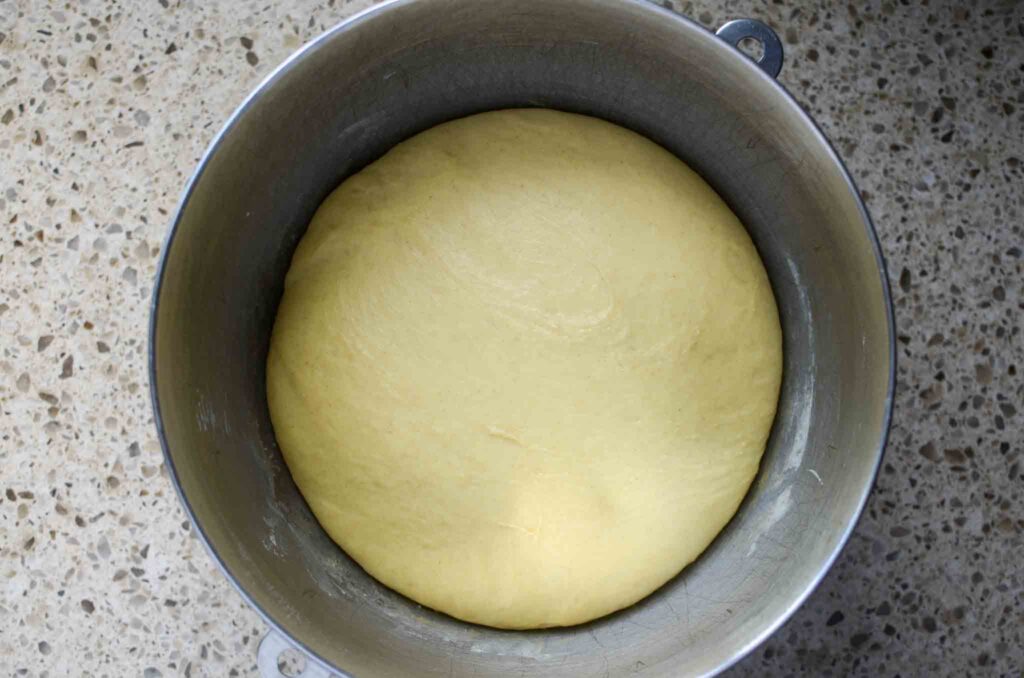
Shape
The next day, the dough will have increased by 50% in size and look full and puffy. Turn the dough out onto a lightly floured work surface. Use your fingers to gently stretch the dough into a rectangle, roughly 12 X 16 inches. If the dough shrinks back after stretching, let the dough rest for a few minutes to give the gluten a chance to relax before trying again.
Next, mix the filling. In a small bowl combine 200 g (1 cup) brown sugar and 2 tbsp ground cinnamon.
Spread 4 tbsp softened butter in a thin layer over the entire dough using a small offset spatula.
Sprinkle the cinnamon sugar mixture evenly over the butter.
Grease the pan using 2 tbsp of butter. It may seem excessive and you may wonder if you read the recipe correctly. It’s a lot of butter to grease a pan with.
Note: The extra butter from greasing the pan melts and bakes with cinnamon and sugar mixture to create the gooey, caramel sauce in the bottom of the pan.
Cut the dough into 32 small pieces using a pizza cutter or a sharp knife. No need for precise, uniform squares. The variety of square sizes gives the bread a whimsical look which is part of its charm.
Stack the pieces a few at a time and place them into the pan standing up. Continue until all of the dough is in the pan. You may need to adjust the spacing so they’re evenly throughout the pan.
Don’t let all of the cinnamon sugar filling that fell off of the dough go unused. Use a bench scraper and gather the cinnamon, sugar, and flour from the work surface, and sprinkle over the top of the pan. I like to go back and spread each piece apart, letting the filling mixture fall in between each piece.
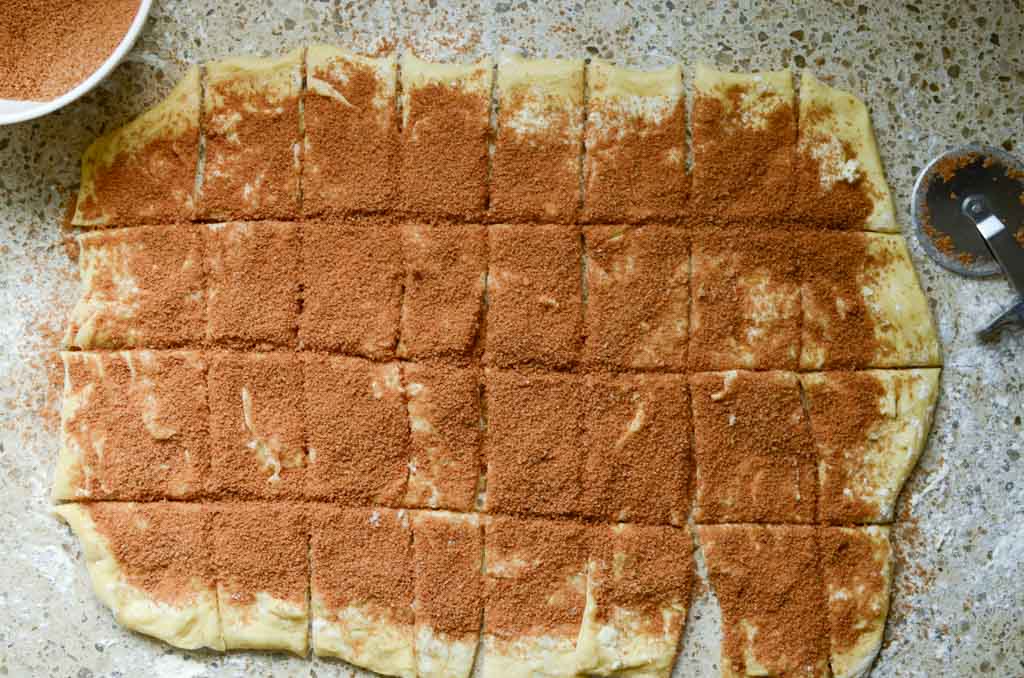
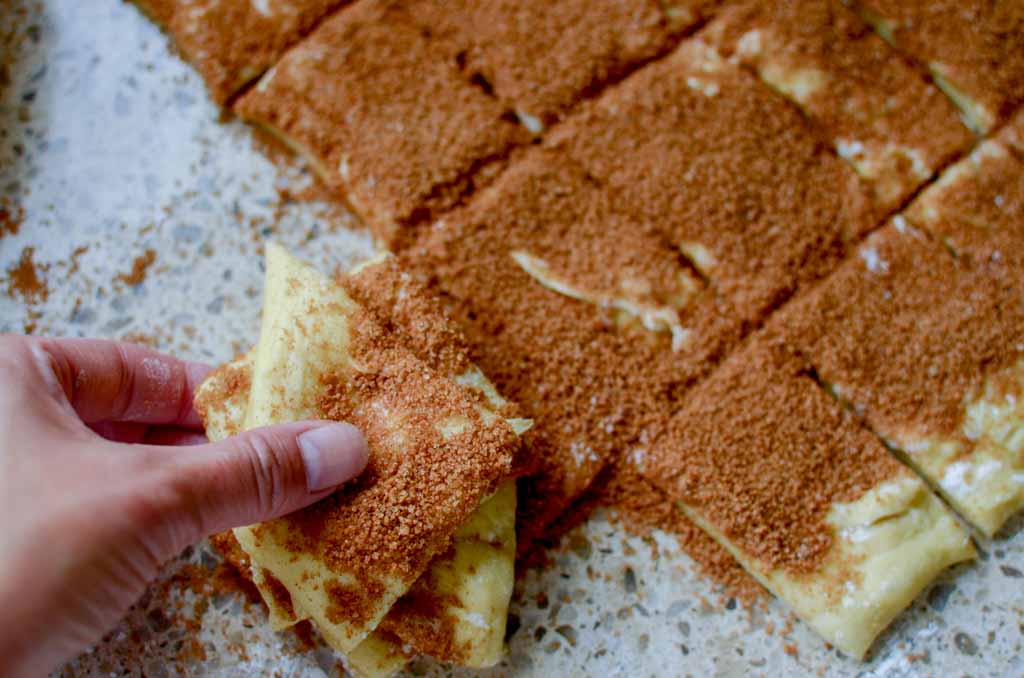
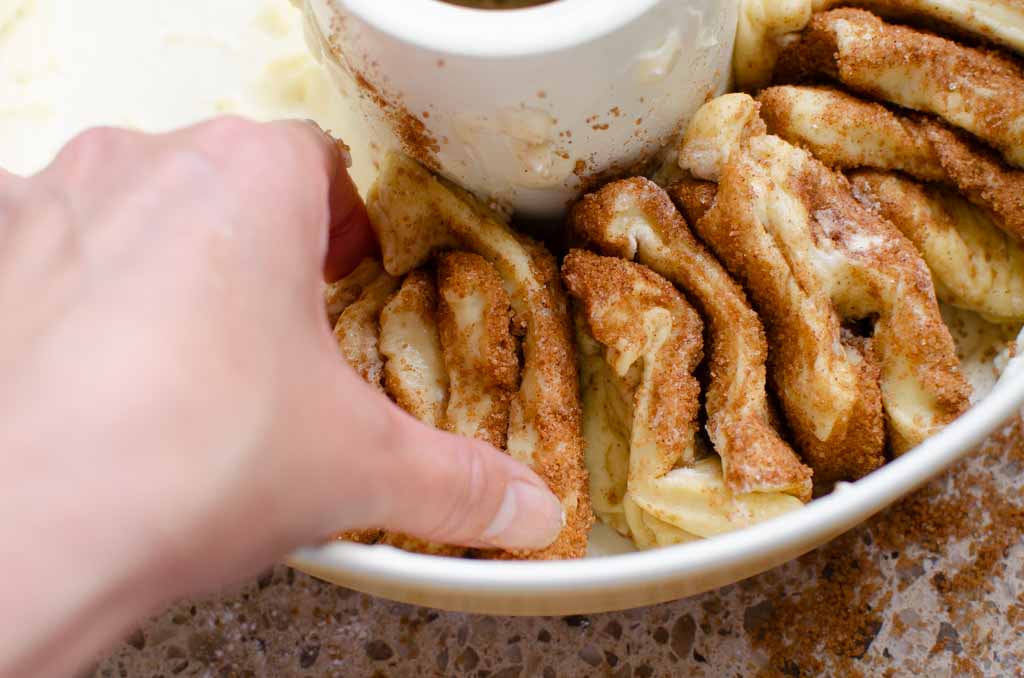
Second Rise
Cover the pan with a piece of plastic wrap and let the dough rise in a warm place in the kitchen for 1-2 hours, depending on the warmth of your kitchen.
Bake
Preheat the oven to 350 degrees. Bake until the bread is golden brown, 30 to 40 minutes.
Serve
When the bread is done, immediately invert it onto a serving platter or large plate. Left alone, this will place the bottom of the pull-apart bread facing up. I prefer to have the top of the bread facing up, so I invert it a second time. Both are stunning and delicious so feel free to choose how you want to serve it.
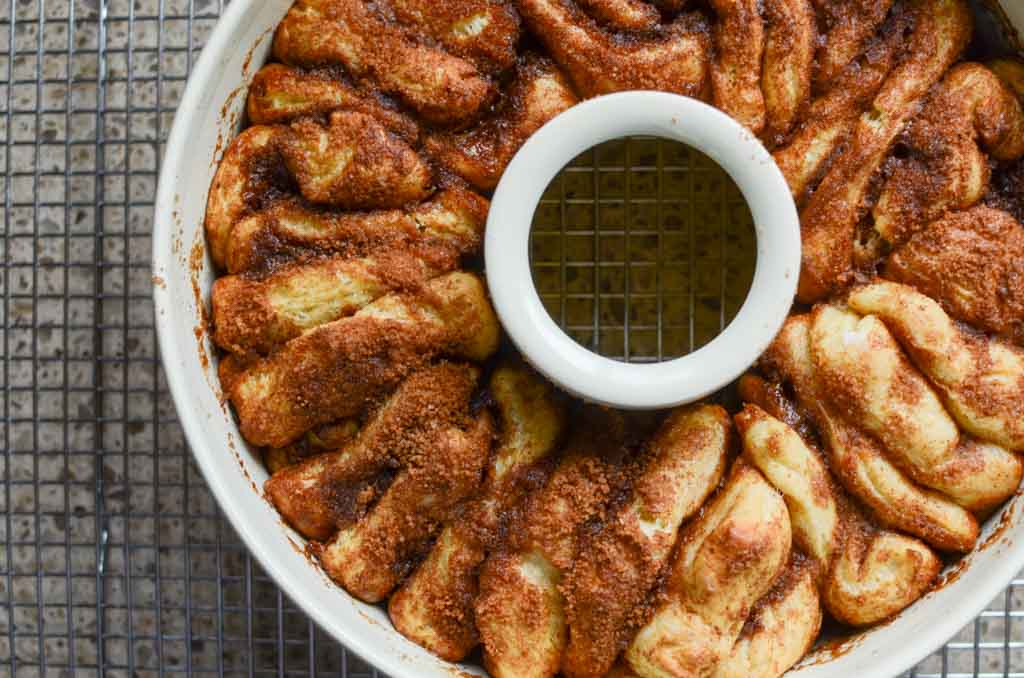
What’s The Best Way To Store Cinnamon Sugar Pull Apart Bread?
This pull-apart bread is best the day it is baked. Any baked good that’s covered in sugar or has a sugary glaze will soften and turn moist as it sits because sugar is hygroscopic, meaning that it pulls moisture from the air. Place any leftover bread into a bakery-style box that breathes. I have used a garment cardboard gift box with a piece of parchment or wax paper to line the bottom. An airtight container will hold the moisture in, making the bread soften quicker.
What Type of Pan Should I Use To Make Cinnamon Pull-Apart Bread?
- Bundt pan – Creates a beautiful, round bread for a stunning wreath style pull apart bread.
- 8X4 bread loaf pan – Divide the dough into two bread loaf pans.
- Angel food cake pan – In the same way as a bundt pan, an angel food cake pan can create a wreath-shaped pull-apart bread.
- Heart shape – Though not as common to have but a fun, unconventional shape that’s great for Valentine’s Day or when you want to make for those you love.
Sample Schedule
This is a sample schedule to help understand how to time baking with sourdough. If you plan to make this in the warm, summer months, keep any eye on the dough as it may rise quicker and shorten the rise times indicated. If, however, you plan to make this in the cold, winter months, allow more time since the dough is in a cooler environment.
You can also place the dough in a warmer place, like an oven with the light on or in front of a heating vent. Just be sure to keep an eye on it that the dough doesn’t get hot and kill the yeast.
Day 1
1:00 pm – Feed the Starter
7:00 pm – Mix the Dough
7:30 pm – First Rise
Day 2
6:30 am – Shape the Dough
6:45 am – 8:45 am – Second Rise
8:30 am – Preheat Oven
8:45 am – Bake
I’d love to hear from you! Please leave a comment and rate the recipe. Tag photos #Lockremhomestead over on Instagram when you share pictures of your Sourdough Cinnamon and Sugar Pull-Apart Bread!
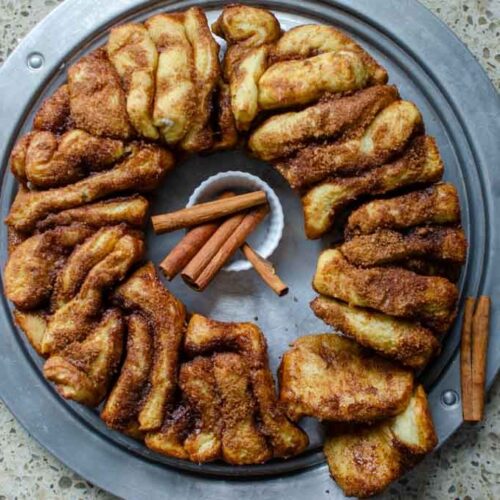
Sourdough Cinnamon And Sugar Pull-Apart Bread
Want to Save This Recipe?
Enter your email & I’ll send it to your inbox. Plus, get great new recipes from me every week!
By submitting this form, you consent to receive emails from Lockrem Homestead
Ingredients
Sourdough Bread Dough Ingredients
- 50 g water ¼ cup
- 50 g Greek yogurt ¼ cup
- 42 g honey 2 tbsp
- 56 g salted butter 4 tbsp/ ½ stick
- 3 large eggs
- 125 g sourdough starter discard ½ cup
- 406 g all-purpose flour 3¼ cups
- ½ tsp salt
Filling Ingredients
- 200 g light brown sugar 1 cup
- 2 tbsp cinnamon
- 85 g salted butter, divided 6 tbsp
Instructions
Mix the Dough
- The bread uses an active starter so you'll need to feed the sourdough starter 6-8 hours before you plan to mix the dough. I generally use a 1:1:1 ratio whenever I feed my sourdough starter.
- Melt 56 g (4 tbsp) butter in a small saucepan until it melts.
- Add 125 g (1/2 cup) of sourdough starter, 50g (1/4 cup) Greek yogurt, 42 g (2 tbsp) honey, 3 large eggs, melted butter, and 50 g (1/4 cup) warm water into the bowl of a stand mixer fitted with a dough hook attachment. Turn the mixer on low and mix until the ingredients are combined.
- Add 406 g (3 1/4 cups) all-purpose flour and 1/2 tsp salt to the wet ingredients and mix on medium-low speed for 5 minutes.
- Remove the dough hook and cover the bowl with a tea towel for 30 minutes.Check the dough by grabbing the edge of the dough and lift it straight up. It will go from a shaggy dough into a smooth and elastic dough, indicating that the gluten is strong enough for bulk fermentation.
First Rise
- Cover the bowl with a piece of plastic wrap or a plate and let the dough rise in a warm place in the kitchen for 10-12 hours.The exact rise times will vary depending on the temperature of your kitchen and the strength of your sourdough starter. Be patient though, you don't want to rush this step. I like to do this step overnight.
Shape
- The next day, turn the dough out onto a lightly floured work surface using a bowl scraper or silicone spatula. Use your fingers to gently stretch the dough into a large rectangle, roughly 12 X 16 inches.
- Next, mix the filling. In a small bowl combine 200 g (1 cup) brown sugar and 2 tbsp ground cinnamon.
- Spread 56 g (4 tbsp) softened butter in a thin layer over the entire dough using a small offset spatula.
- Sprinkle the cinnamon sugar mixture evenly over the butter.
- Grease the pan using 28 g (2 tbsp) of butter.
- Cut the dough into 32 small pieces using a pizza cutter or a sharp knife, with 8 rows the long way and 4 rows the short way. Stack the pieces a few at a time and place them into the pan standing up. Continue until all of the dough is in the pan. You may need to adjust the spacing so they're evenly throughout the pan.
- Use a bench scraper and gather the cinnamon, sugar, and flour from the work surface, and sprinkle over the top of the pan. I like to go back and spread each piece apart, letting the filling mixture fall in between each piece.
Second Rise
- Cover the pan with a piece of plastic wrap and let the dough rise in a warm place in the kitchen for 1-2 hours, depending on the warmth of your kitchen.
Bake
- Preheat the oven to 350 degrees. Bake until the bread is golden brown, 30 to 40 minutes.
Serve
- When the bread is done, immediately invert it onto a serving platter or large plate. Left alone, this will place the bottom of the pull-apart bread facing up. I prefer to have the top of the bread facing up, so I invert it a second time.


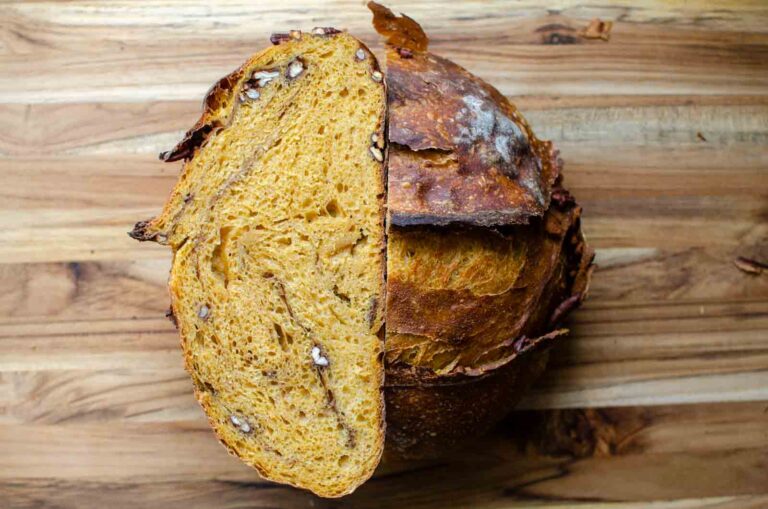
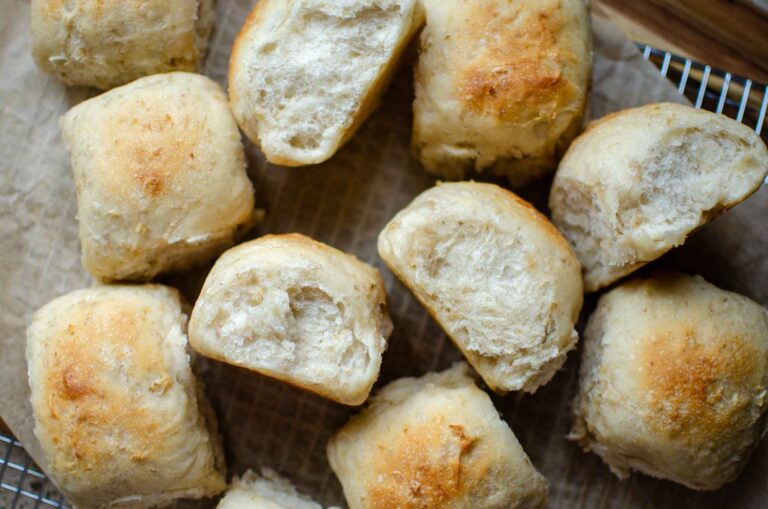
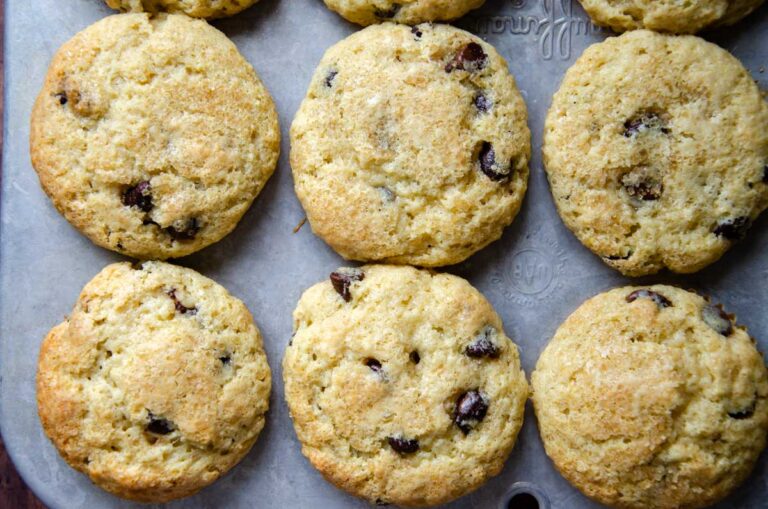
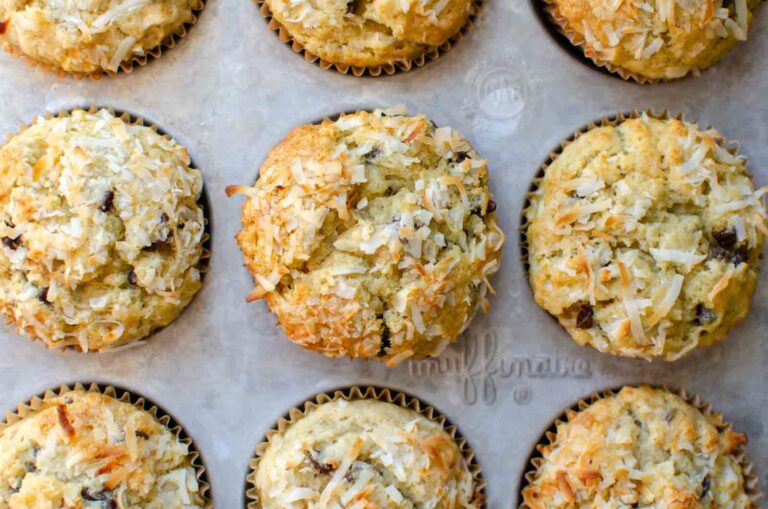
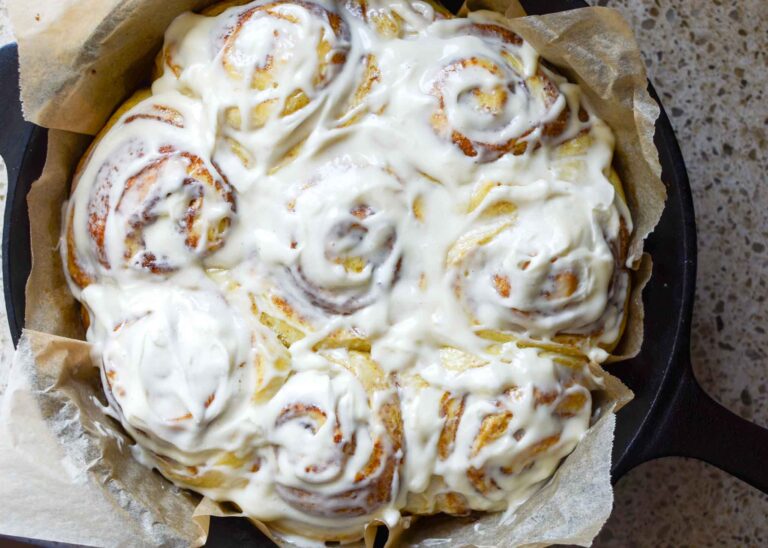

I know you’re going to LOVE this recipe! It’s one of our family favorites. Plus, don’t forget that you can leave a comment or ask me a question here, and I’ll get back to you!